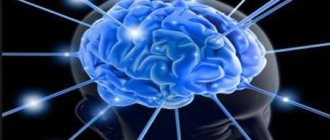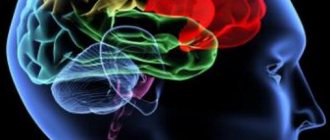Individual human development is a variety of changes that occur in the body from the moment of conception to death, the transition from one state to another. The unit of growth and development of an organism is the cell. The formation of a person begins with the process of fusion of haploid germ cells (egg and sperm, the formation of one diploid cell - zygote).
Individual human development: briefly about the main stages
In biology, the process of individual development of an organism is called ontogenesis. The term comes from two Greek words meaning “existing” and “generation.” Individual human development consists of three periods: embryonic, postnatal, and adulthood. Each period, in turn, has several stages.
Stages of human ontogenesis. Table
| Periods of development | Stages and stages of individual human development |
| I. Intrauterine (from conception to birth). | 1. Early embryonic (from conception to 34 days of the embryo); (stages: zygote, cleavage, gastrulation, organ formation). 2. Embryonic stage (from 35 to 60 days). 3. Fetal stage (from 2 months to birth). |
| II. Postnatal (from birth to 21–25 years). | 4. Newborn (from birth to 10–15 days). 5. Breastfeeding (milk feeding) (up to 1 year). 6. Childhood (from 1 year to 11–12 years), including early (from 1 to 3 years), middle (from 3 to 6 years), later (from 6 to 11–12 years). 7. Teenage (from 11–12 to 15–16 years). 8. Youth (from 15–16 to 21–25 years). |
| III. Mature (from 21–25 years to physiological death). | 9. Mature (from 21–25 to 55–60 years). 10. Elderly (from 55–60 to 75 years). 11. Senile (from 75 to 90 years). 12. Long-livers (from 90 years and older). |
The individual development of the human body begins with the process of fertilization. Eggs mature in a woman’s body every month. In the middle of the menstrual cycle, ovulation occurs and the egg begins its indirect journey to the uterus. Sperm enter the woman's body during sexual intercourse. Fertilization most often occurs in the fallopian tube. The zygote undergoes a series of successive divisions to form an embryo.
Periodization of personality development
E. Erikson identified 8 stages of personality development: infancy (oral-sensory), early childhood (muscular-anal), childhood (locomotor-genital), school age, adolescence and youth, early adulthood, middle age, late adulthood.
Infancy (oral-sensory stage) 0 – 1 year.
At this stage, the child develops trust or distrust in the world. With progressive development, a trusting attitude is manifested in easy feeding, normal deep sleep, and relaxed internal organs. The baby trusts everyone around him without anger or anxiety, and is calm about his mother's absence, feeling that all his needs will be met. During this period, he receives care, attention, and familiarity with the outside world from his mother. Maternal love and tenderness determines the level of faith and hope derived from the first life experience. At this time, he absorbs the image of his mother (the mechanism of introjection arises). The identity of the developing personality begins to form.
Early childhood (muscular-anal stage) 1 – 3 years
During this period, the baby’s capabilities expand: he begins to walk and assert his independence. Parents should help maintain the child's sense of independence. Parents' restrictions on the child's demands must be reasonable, because they create the basis for negative feelings of doubt and shame. If parents are overly harsh, the child develops a fear of “losing face,” constant anxiety, stiffness, and unsociability.
Childhood (locomotor-genital stage) 3 – 6 years
This period coincides with preschool age: the child actively explores the world around him, quickly learns everything, acquiring new tasks and responsibilities, and models adult relationships in play. Gender identification occurs, the child masters male and female behavior patterns. He becomes more independent, initiative is formed. If his behavior becomes aggressive, initiative is limited to adults, and feelings of guilt and anxiety appear. Consequently, new internal authorities are established - conscience and moral responsibility for one’s thoughts, desires and actions. Parents should not put excessive pressure on the child’s conscience and punish, because this will cause constant fear of punishment, vindictiveness, initiative will be inhibited, and passivity will develop.
School age (latent stage) 6 – 12 years
This period is prepubertal (before the child reaches puberty). This stage is associated with the cultivation of hard work and the acquisition of new knowledge and skills, the basics of labor and social experience are comprehended, the possibility of recognition by others and the acquisition of a sense of competence arises. If successes are small, the child acutely perceives his ineptitude or inability, and feels insecure among his peers. Instead of a feeling of competence, a feeling of inferiority is formed. This period is a kind of beginning of professional identification, a sense of connection with representatives of certain professions.
Adolescence and youth (12 – 20 years)
Adolescence and adolescence are a period of deep crisis. Childhood is over, identity begins to form. It combines all previous identifications of the child, new ones are added to them, because growing up begins, appearance changes, inclusion in new social groups occurs, new ideas about oneself are acquired. Holistic personal identity, independence, initiative and competence allow young people to solve the problem of self-determination and choice of life path. If you fail to understand yourself and your place in society, there is a diffusion of identity. An infantile desire not to enter adulthood, a persistent state of anxiety, a feeling of isolation and emptiness appears.
Early maturity (20 – 25 years)
In early adulthood, a person faces the problem of intimacy (closeness), true sexuality appears. A person is ready for intimacy with another both sexually and socially. After searching for his own identity, he is ready to merge with the identity of the one he loves. Close relationships require loyalty, moral strength and self-sacrifice. But this desire should not be drowned out by the fear of losing one’s own “I”. This is the time to start a family. It brings love, understood by E. Erikson in a romantic, erotic and moral sense. In marriage, love is manifested in care, respect, and responsibility for a life partner. If a person is not able to love and establish close relationships with other people, then this leads to isolation and loneliness.
Average age (25 – 65 years)
This is the period of maturity, it is the longest. The main thing is “a person’s attitude towards the products of his labor and his offspring”, concern for the future of humanity. The desire to be productive and creative, to pass on your experience and ideas to the next generation. The desire to contribute to the lives of future generations is realized in relationships with your children. Erikson emphasized the dependence of the older generation in the family on the younger one, because a mature person needs to be needed. If this opportunity is not available, indifference and self-focus appear.
Late adulthood (after 65 years)
The last stage is integrative: “the fruits of the seven previous stages ripen.” A person takes the path of life he has passed for granted and gains personal integrity. Wisdom appears, a look into the past makes it possible to say: “I am satisfied.” Children are perceived as an extension of themselves, the fear of death disappears. If a person is dissatisfied with his life lived, considers it a series of mistakes, irritation and despair appear from approaching the end.
Prenatal period of development
The embryo develops in about 280 days. By the end of the first 24 hours after fertilization, the zygote is fragmented, and after 40 hours the embryo consists of four cells. Multiple mitotic divisions occur, resulting in the formation of a dense ball, and cell differentiation begins. The embryo moves towards the uterus through the oviduct, after 5–6 days it enters the uterus and attaches to its wall. After this, the fetus receives oxygen and nutrition from the mother’s blood.
By the 26th week, the fetus is formed enough that it can survive in the event of premature birth. By the 30th week, the unborn baby usually lies head down. 40th week - the birth of a newborn.
Formational approach
This classification focuses on the method of production and form of ownership. According to Karl Marx, the author of this theory, human society moves from one socio-economic formation to another. The scientist identified five steps:
- primitive (communal form of ownership, absence of class division, appropriating economy);
- slaveholding (division of society into slaves and their masters, the presence of private property);
- feudal (the existence of feudal lords - land owners and peasants);
- capitalist (division of society into bourgeois and proletarian classes - workers, private property in the hands of entrepreneurs);
- communist (no division into classes, public property).
Karl Marx believed that the driving force behind the development of society is social revolution as a result of class struggle.
Rice. 1. Karl Marx.
Postembryonic ontogenesis
In the postembryonic period of development, three major stages are distinguished. Childhood and adolescence are also called pre-reproductive age. Humans, unlike animals, are characterized by a long period of maturation. Maturity is reproductive, aging is post-reproductive stages of ontogenesis. Individual human development and its possible disorders are the subject of study not only of biology, but also of medicine. In ontogenesis, there are critical periods when the body is most vulnerable to damaging environmental factors: infections, stress, etc. These difficult periods after birth are: the 1st year of life, puberty and menopause. The menopausal period, like adolescence, is characterized by physiological changes in the body, internal and external changes.
Modern classification
The basis for the modern classification adopted in social science is the historical stages of the development of society. They take into account the means of production, the nature of economic activity, and forms of government. According to this theory, there are three stages in the development of society.
Traditional (agricultural)
This society developed in ancient times. Let us briefly list its features:
- type of society - primitive, slaveholding, feudal;
- natural economy;
- manual labor;
- absolute monarchy, despotism, tyranny;
- development is based on traditions;
- The leading role is played by the church or the army;
- low social mobility;
- the majority of the population is uneducated.
It’s hard to imagine, but in the modern world there are tribes that have preserved the way of the Stone Age. Thus, in the Amazon jungle lives the Pirahã tribe, which has preserved the traditions of a primitive society. The inhabitants of the tribe are opposed to everything new; they do not have numbers, time, or color symbols.
Industrial
Industrial society finally emerged by the middle of the last century. Its signs are:
- capitalism or communism;
- industrialization, industrial development;
- division of labor;
- limitation of power, formation of the foundations of a democratic society;
- progress of science and technology;
- increase in the number of urban population (urbanization);
- division of society into classes of the bourgeoisie (industrialists) and the proletariat (wage workers).
Countries such as 19th century France and the USSR can be classified as industrial societies.
Rice. 2. Steel plant.
Post-industrial (informational)
The beginning of the formation of the information society dates back to the second half of the 20th century. It has the following features:
- capitalist society;
- the main factor of production is information;
- automation and robotization of production;
- developed civil society and the rule of law;
- political pluralism;
- scientific and technological revolution;
- lack of classes.
States at the stage of post-industrial society include the USA, Japan, and Great Britain.
Rice. 3. Table “Stages of development of society.”
A skilled man
It was from them that the most ancient species of people originated, whom scientists call Homo habilis - “skillful man.”
The authors of the theory of evolution believe that in appearance and structure, Homo habilis did not differ from apes, but at the same time he was already able to make primitive cutting and chopping tools from roughly processed pebbles.
Thirty to seventy years (average maturity)
The basic characteristic is caring. Caring implies responsibility that a person shows in all areas of life. He cares about the family, about the children. He takes care of his parents, who need him more and more with age. Responsible for the development of his business and the well-being of his employees. For those who are particularly active and caring, this is not enough to fully feel their own importance. Such people are engaged in social activities, politics, trying to change the country and the world for the better.
Neanderthals
The Neanderthal (Homo neanderthalensis) was once considered the ancestor of modern humans. This species, according to the theory of evolution, appeared about 200 thousand years ago, and ceased to exist 30 thousand years ago.
Neanderthals were hunters and had a powerful physique. However, their height did not exceed 170 centimeters. Scientists now believe that Neanderthals were most likely just a side branch of the evolutionary tree from which man originated.
Test on the topic
- /5
Question 1 of 5What is the name of the science that studies the stages of human evolution?
Start test
Hall of Fame
To get here, take the test.
- Alexander Bernyukov
5/5
- Sasha Lokhov
5/5
- Gulsa Kudaybergen
5/5
- Nadiya Osmanova
5/5
Homo sapiens or Cro-Magnon
Homo sapiens (in Latin - Homo sapiens) appeared, according to Darwin's theory of evolution, 100-160 thousand years ago. Homo sapiens built huts and huts, sometimes even living pits, the walls of which were lined with wood.
They skillfully used bows and arrows, spears and bone hooks to catch fish, and also built boats.
Homo sapiens was very fond of painting his body and decorating clothes and household items with drawings. It was Homo sapiens who created human civilization, which still exists and develops today.
Cro-Magnons
They were tall - up to 180 cm, with a high forehead, and a brain volume of 1600 cm3. There was no continuous ridge above the eyes; the chin protuberance is well developed on the lower jaw, which indicates the development of articulate speech. The Cro-Magnons had the entire complex of basic physical features that our contemporaries also have. Their mental development has reached a high level. This is evidenced by the changes that have taken place in their lives.
Flint tools became more diverse and sophisticated; the Cro-Magnons began to widely use materials that were difficult to process: bone, horn. They knew how to drill, grind, knew pottery, domesticated animals, began to develop agriculture, sewed animal skins and made clothes and housing from them. All this made people less dependent on climatic conditions. That is why people began to explore previously inaccessible areas of the globe. Cro-Magnons lived in tribal communities in built dwellings.
At this stage, another major event occurred in people’s lives - the emergence of art. Drawings by the first artists discovered on the walls of caves, stone and bone sculptures made with amazing skill for that time. The painting of the Kapova Cave (in the Urals) is world famous. Religion is born. Human evolution has escaped the dominant control of biological facts and acquired a social character.
Australopithecus
Australopithecines are the descendants of Dryopithecus. They lived on Earth about 4 million years ago. The African steppes were considered the main zone of their settlement. Bones and fossilized remains that belonged to them are still found there. Compared to their predecessors, Australopithecines were very well developed. Some scientists, for example, H. S. Lipson, who study human evolution, are confident that this particular species of ape played a decisive role in the formation of modern man - Homo sapiens (reasonable man).
Among the characteristic features of Australopithecus, a number of factors should be highlighted:
- The jaw was relatively weak.
- The fangs that protruded outward were completely absent.
- The brain is well developed, its volume was about 530 cm3.
- Male Australopithecines were almost 50% larger and heavier than females.
- In Australopithecines, representatives of this stage of evolution, the anterior hand began to develop, which led to the formation of a grasping reflex. Now it was not difficult for them to take an object and move it from one place to another.
- Australopithecus was one of the first to learn to walk with an upright gait. How they were able to do this is still unclear.
- For hunting, they could use improvised means at the same level as modern gorillas, who can crack nuts using large stones.
- The height was generally 1-1.5 meters.
- Due to the fact that australopithecines had to descend from the trees to land, the foot began to straighten a little.
Anthropogenesis










